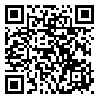Volume 17, Issue 59 (Jul 2007)
J Mazandaran Univ Med Sci 2007, 17(59): 69-75 |
Back to browse issues page
Download citation:
BibTeX | RIS | EndNote | Medlars | ProCite | Reference Manager | RefWorks
Send citation to:



BibTeX | RIS | EndNote | Medlars | ProCite | Reference Manager | RefWorks
Send citation to:
Kosaryan M, Vahidshahi K, Shafaat B, Abaskhanian A, Azizi S, Shahrokh S et al . Screening of Developmental Problem, Day care Centers, Sari, 2006. J Mazandaran Univ Med Sci 2007; 17 (59) :69-75
URL: http://jmums.mazums.ac.ir/article-1-234-en.html
URL: http://jmums.mazums.ac.ir/article-1-234-en.html
Abstract: (14521 Views)
Background and purpose: There has not been enough attention towards the domains of development in pediatrics,so there are many deficiencies in monitoring the achievement of developmental milestones in our country.
One of the important ways for the improvement of this problem is to use screening method. PEDS questionnaire is one of the screening tools for development. The aim of this study was to investigate about parents' evaluation of developmental status for their children.
Materials and Methods: This was a cross-sectional descriptive study. The population included infants and children under the age of 6 in day care centers of Sari. Sampling method was clustering. The tool for data collection was PEDS questionnaire (Parents' Evaluation of Developmental Status) which consisted of 38 questions about demographic data and medical history of children as well as parents' concern about different developmental domains along with ''Yes'' , ''No'' and ''little'' answers. The data were analysed using SPSS11 software. Chi square and Wilcoxon were used. P<0.05 was considered significant.
Results: Out of 829 questionnaires, 736 were returned (88.7%). The Sample age was 4.23 ± 1.32 gl . Fifty percent of participants were male. By average, in each developmental domains, 3.2% of parents had major concern and 9.5% had partial concern. The most common domains of concern were communication with others (6.4%), behavior (6.1%), speaking (4.3%), preschool and school education (3.1%), children's understanding (2.5%), the self care (2.1%), the use of fingers (1.4%), the use of legs and arms (1.1%). Parents' concern had a significant relationship with parent's education, residence and history of illness in children (P<0.05). Out of 23.4% of the infants and children who had later returned to the diagnosis center, 80% had behavioral disorder, 87.6% had speech disorder and 16.6% had hearing impairment..
Conclusion: A considerable percentage of parents was concerned about developmental domains of their children, but follow up at referral centers was low. Parents' concern led to the diagnosis of an illness for a child in most cases.
Materials and Methods: This was a cross-sectional descriptive study. The population included infants and children under the age of 6 in day care centers of Sari. Sampling method was clustering. The tool for data collection was PEDS questionnaire (Parents' Evaluation of Developmental Status) which consisted of 38 questions about demographic data and medical history of children as well as parents' concern about different developmental domains along with ''Yes'' , ''No'' and ''little'' answers. The data were analysed using SPSS11 software. Chi square and Wilcoxon were used. P<0.05 was considered significant.
Results: Out of 829 questionnaires, 736 were returned (88.7%). The Sample age was 4.23 ± 1.32 gl . Fifty percent of participants were male. By average, in each developmental domains, 3.2% of parents had major concern and 9.5% had partial concern. The most common domains of concern were communication with others (6.4%), behavior (6.1%), speaking (4.3%), preschool and school education (3.1%), children's understanding (2.5%), the self care (2.1%), the use of fingers (1.4%), the use of legs and arms (1.1%). Parents' concern had a significant relationship with parent's education, residence and history of illness in children (P<0.05). Out of 23.4% of the infants and children who had later returned to the diagnosis center, 80% had behavioral disorder, 87.6% had speech disorder and 16.6% had hearing impairment..
Conclusion: A considerable percentage of parents was concerned about developmental domains of their children, but follow up at referral centers was low. Parents' concern led to the diagnosis of an illness for a child in most cases.
Keywords: Infant-child, Screening of developmental delay
Type of Study: Research(Original) |
| Rights and permissions | |
 |
This work is licensed under a Creative Commons Attribution-NonCommercial 4.0 International License. |






